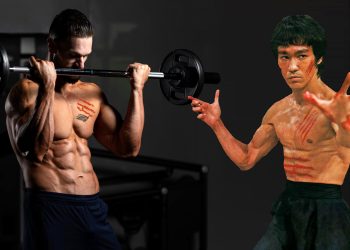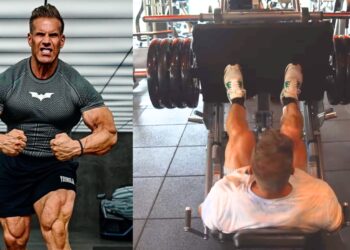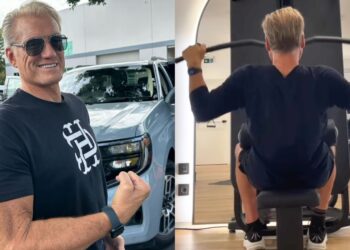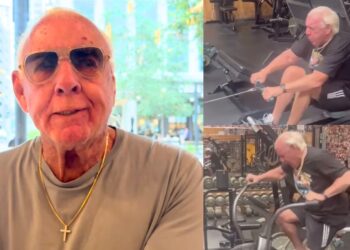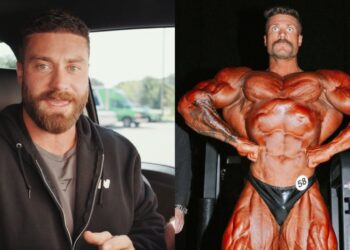The glutes are the biggest and strongest muscle group in the body. But, they usually do not get the same attention as mirror-friendly muscles like biceps or shoulders.
Many people think being able to perform a squat is proof enough that their hips are in optimal shape. This article will make you reconsider this assumption.
Your hips perform six movements, including:
- Internal rotation
- External rotation
- Abduction
- Adduction
- Flexion
- Extension
You should be able to perform all six movements with the perfect form. Issues in these six patterns deny your healthy and fully-functional hips claim.
This article discusses the reasons behind stiff hips and the best exercises for them. We also decode the importance of hip internal rotation and why it should be a part of your training regimen.
What is Internal Hip Rotation?
Hip internal rotation involves twisting your thigh inward from your hip joint. You could perform internal hip rotation while seated or standing.
Level Up Your Fitness: Join our 💪 strong community in Fitness Volt Newsletter. Get daily inspiration, expert-backed workouts, nutrition tips, the latest in strength sports, and the support you need to reach your goals. Subscribe for free!
There are three ways to do this:
- Sit upright on a chair with your feet planted on the floor. Turn your knee inward and feel a stretch in your adductors.
- Sit upright on a chair and extend your leg straight in front of you. Rotate your leg and foot toward your body’s midline.
- Stand with an upright torso and a shoulder-wide stance. Place your right foot in front of you without bending at your knee. Pivot your body to the right.
Want to check if your internal hip rotators are in optimal shape? Try these three methods. Pain or stiffness while rotating your toes toward your body’s midline are signs of internal hip rotator trouble.
Exercises like the squat use hip internal rotators. They are also used during day-to-day activities like walking, running, crouching, or crawling. Internal hip rotators are also engaged while balancing your body on one leg.
Internal hip rotation fires up several muscles in your hip, buttocks, and thighs. These include the following:
- Adductor longus, brevis, and magnus
- Pectineus
- Tensor fasciae latae
- Parts of the gluteus medius and gluteus minimus
Inadequate hip internal rotation can lead to a compromised range of motion. Limited hip rotator ROM can hamper your performance in exercises like the squat, lunge, and deadlift. Plus, it can hinder your efficiency in daily functions.
You do not need to hang your head low if you have trouble rotating your thigh bones inward. Poor biomechanics happen to the best of us. The good news is it is fixable.
Causes for Inferior Internal Hip Rotation
A curbed internal hip rotation is not always the result of an injury. A limited internal hip rotation might creep on you without you realizing it. It might be happening right now as you read through this article.
Want to know what to look out for? Here are a few common causes of poor internal hip rotation:
1. Hip Impingement
Hip impingement is the pinching of the femoral head against the acetabulum (the hip joint cup). It can cause hip stiffness and pain and can lead to arthritis.
An abnormal femoral bone shape generally causes hip impingement. The condition is more common in youngsters who play sports that demand a lot of hip twists and sudden direction changes. Undergoing surgery is the only way to fix this problem.
2. Sedentary Lifestyle
An inactive lifestyle is the source of many health issues — mental and physical. Most of us spend the majority of our days hunched over a computer screen or phone.
Sitting for prolonged periods can overload our hips, causing stiffness and mobility loss. Folks with a desk job should get off their chairs for at least 10 minutes every hour.
Make subtle lifestyle changes like taking the stairs when possible. Walk around your office or home when you have to use your phone. Add toe touches to the mix to improve your mobility.
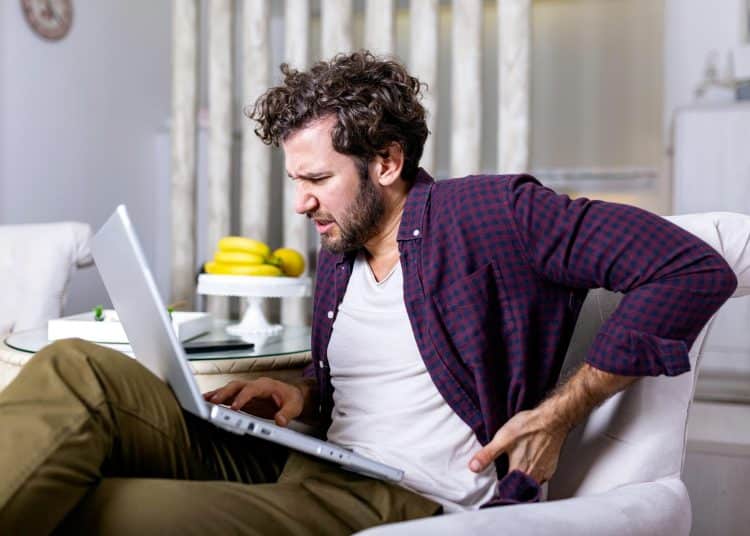
3. Poor Posture
A poor posture is usually a result of an inactive lifestyle. People with hunched backs and rounded shoulders are more prone to poor hip mobility.
A shoddy posture can overload your hips and cause stiffness and pain. Always be conscious about your stance and take corrective measures as soon as you find yourself slouching.
4. Strained Muscles
Overworking your hip rotators can also cause muscular stiffness. Internal hip rotators are a small muscle group. You don’t need to perform more than one weekly exercise to train them.
You should also give your lower body at least 48 hours to recuperate between workouts. Doing too much without proper rest can be counterproductive.
5. Osteoarthritis
Osteoarthritis (OA) is the most common joint disorder and form of arthritis [1]. OA occurs when the protective cartilage that cushions the bone ends wears down. This degenerative joint disease usually affects your hands, knees, hips, and spine joints. One cannot reverse joint damage caused by OA.
6. Trochanteric bursitis
It is the inflammation of the bursa (fluid-filled sac near a joint) at the greater trochanter — a part of the hip. This chronic pain affects the hip’s outer area or the outside part of the upper leg, from the hip to the knee along the thigh. Treatments for bursitis include icing, anti-inflammatory medication, steroid injections, and physiotherapy.
Side Effects of Poor Hip Internal Rotation
Each muscle in our body plays a crucial role. But, we don’t usually realize their importance until we face a setback.
Hip internal rotation is a niche subject; even most gym regulars might never have heard of it. Nonetheless, think twice before shrugging in ignorance when the topic comes up. Weak hip internal rotators can cause the following adverse effects:
1. Gait Issues
Problems in walking, running, jumping, and balancing are the first signs of compromised internal hip rotation. Dizziness, lightheadedness, vertigo, motion sickness, and double vision usually follow gait issues.
Level Up Your Fitness: Join our 💪 strong community in Fitness Volt Newsletter. Get daily inspiration, expert-backed workouts, nutrition tips, the latest in strength sports, and the support you need to reach your goals. Subscribe for free!
2. Inward Caving Legs
Stronger muscles step in to support weak or injured muscles. The external rotators will take over when you have lagging hip internal rotators. It causes your legs to cave in, leading to issues like knee valgus. Not fixing muscle imbalances can drive you into a vicious cycle.
Must Read: The Ultimate Knee Valgus Guide: What It Is and How To Fix and Prevent It
3. Weak Lower Body
Frail hips can result in lower body underdevelopment. You might get away with overlooking half of your body in the short term. But, your weak foundation will someday catch up to you.
4. Lower Back Pain
Weak glutes can cause lumbar spine pain. It doesn’t end with lower back pain. Poor hip rotation puts unnecessary stress on the compensating joints, tendons, and ligaments, making them more prone to injury.
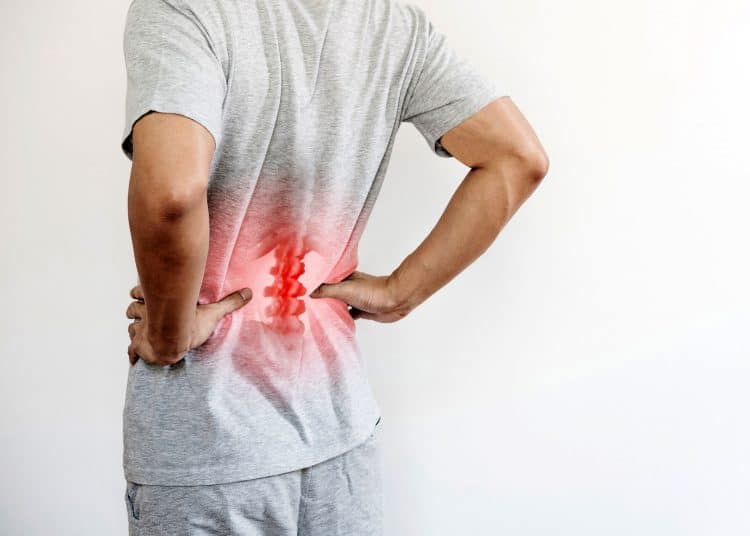
5. Compromised Range of Motion
Muscle stiffness and weakness can hamper your range of motion, restrict your functionality and cause a dip in physical performance. It can make moving your muscles painful.
Hip health is vital for athletes, especially those engaged in sports that need explosiveness and agility. Sports like football and ice hockey that involve sudden direction changes demand optimal hip functionality.
Treatment for Inadequate Internal Hip Rotation
The treatment for poor hip internal rotation will depend on the cause and symptoms. A doctor might recommend medication if you are facing issues due to inflamed muscles. Physical therapy will help if a sedentary lifestyle, poor posture, or strained muscles are the culprits.
8 Exercises and Stretches For Poor Hip Internal Rotation
The tensor fasciae latae, gluteus minimus, adductor longus, brevis, magnus, pectineus, and piriformis enable internal hip rotation. The exercises mentioned below will work on these muscles.
1. Windshield Wipers for Hips
Steps:
- Sit upright on the floor.
- Place your feet flat on the floor in front of you as far apart as possible.
- Slowly flop both knees off to your right side while keeping your torso upright.
- At the top of the movement, your right upper leg should align with your hips. Your right lower leg should be perpendicular to your quad. At the same time, your left upper leg should align with your torso, and the lower leg should be perpendicular to it.
- Return to the starting position.
- Repeat on the left side.
- Alternate between sides for recommended reps.
Pro Tip: Don’t worry if your knees don’t touch the floor. It requires practice and mobility and will come with time.
2. Standing Pendulum Leg Swing
Steps:
- Stand upright with a shoulder-wide stance.
- Place your hands on your hips.
- Lift your right leg toward the ceiling by bending at your knee. At the top, your upper leg should be parallel to the floor and the lower leg perpendicular.
- While keeping your right knee pinned, swing your lower leg to the sides like a pendulum. Feel the stretch in your inner and outer hip rotators.
- Repeat for recommended reps before switching sides.
Pro Tip: Ensure your shoulders, chest, and hips are square throughout the exercise. Don’t let your pelvis drop to one side during pendulum swings.
3. Clamshell
Steps:
- Lie on your side on an exercise mat, with your legs stacked and knees bent at a 45-degree angle.
- Rest your head on your lower arm, and place your upper arm on your hip.
- Stack your hipbones on top of one another.
- Keeping your feet touching, raise your upper knee as high as possible without shifting your hips or pelvis.
- Pause and contract your hips at the top.
- Slowly return to the starting position.
- Repeat for recommended reps.
Pro Tip: Tie a resistance band around your knees if the bodyweight version of this exercise feels too easy.
4. Fire Hydrants with Toe Drop
Steps:
- Start in a tabletop position with your hands under your shoulders and your knees under your hips.
- Lift your left leg away from your body at a 45-degree angle without extending your knees.
- At the top of your knee lift, drop your foot to the floor by externally rotating your right thigh towards the ceiling.
- Return to the starting position.
- Repeat for recommended reps before switching sides.
Pro Tip: Keep your head and torso neutral throughout the exercise. Looking forward can strain your neck, and rounding your back will reduce the tension from your hips.
5. 90-90 Leg Lift
Steps:
- Sit on the floor with both knees in a “90-90” or “pinwheel” position.
- Sit upright and place your hands on the floor for support.
- Lift the front leg toward the ceiling while keeping your knee and ankle in a straight line.
- Repeat for ten reps.
- Now, lean forward slightly for the rear leg lift.
- Lift your back leg toward the ceiling while maintaining your knee to shin in a straight line.
- Repeat for ten reps.
- Switch sides.
Pro Tip: Keep your torso as upright as possible throughout the exercise. Leaning to the side makes the movement easier.
6. Hip Lateral Glide
Steps:
- Get into a tabletop position next to a sturdy object.
- Wrap one end of a resistance band around the object and the other end around the top of your right leg.
- Position yourself so that the resistance band is perpendicular to your torso.
- The band should be taut at the starting position, so it pulls your leg outward.
- Glide back and forth to put more tension on your internal hip rotators.
- Repeat on the other side.
Pro Tip: Keep the gliding motion slow and controlled to feel an optimal stretch in your hips.
7. Seated Hip Internal Rotation
Steps:
- Sit upright on an elevated platform with your legs bent at 90 degrees and your feet flat on the floor.
- Move your right foot outward and up as far as possible, keeping your knee stable.
- Return to the starting position.
- Repeat for 20 to 30 reps.
- Repeat with your left leg.
Pro Tip: Typing a resistance band around your ankles while performing this exercise can help achieve better hip rotator recruitment.
8. Seated Internal Hip Rotation
Steps:
- Sit upright on the floor.
- Bend your knees at 90 degrees and plant your heels on the floor.
- Place your hands behind you for support.
- Slowly bend your right knee towards your body’s midline and get it as close to the floor as possible.
- Hold for three seconds before returning to the starting position.
- Repeat for recommended reps before switching sides.
Pro Tip: Keep your torso upright throughout the exercise for optimal internal hip rotator stimulation.
FAQs
How to improve hip internal rotation?
Performing hip internal rotation exercises 2-3 times a week can help improve mobility and reduce stiffness if you have tight hips.
What to do if I experience internal hip rotation pain?
Pain while rotating your hip inward can be due to a strained muscle, osteoarthritis, bursitis, or other hip joint issues. You should consult a doctor if the pain doesn’t fade after a few weeks. Consider the pain a red flag if it interferes with your daily functioning.
How often should I perform hip internal rotation exercises?
You don’t need to dedicate a whole workout to internal hip rotation unless you have hip mobility issues. Add 1-2 hip rotation exercises to your regular exercise regimen to maintain healthy hips.
Wrapping Up
Don’t wait to lose mobility before starting hip internal rotation exercises. Perform a couple of exercises mentioned in this article once a week to improve functionality and reduce the risk of injury.
You should do the internal hip rotation exercises 2-3 times a week if you face mobility issues. Stay patient and consistent; improvement can take 8-12 weeks. Best of luck!
References
- Zhang Y, Jordan JM. Epidemiology of osteoarthritis. Clin Geriatr Med. 2010 Aug;26(3):355-69. doi: 10.1016/j.cger.2010.03.001. Erratum in: Clin Geriatr Med. 2013 May;29(2):ix. PMID: 20699159; PMCID: PMC2920533.



